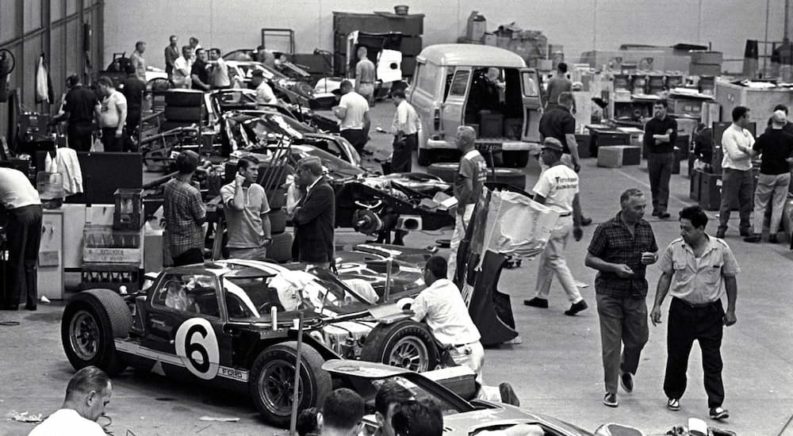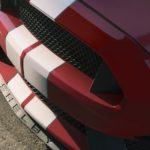The air is filled with exhaust, and your ears are dazzled by the rumbling of engines. The adrenaline of everyone around you is palpable. In a few minutes, your senses will overwhelm you as some of the fastest cars launch from idle, testing their limits and honing their capabilities against one another to see who will finish first. No, this isn’t what you can expect from your local Ford dealer, but it has everything to do with one of Ford’s most prominent innovators and supporters.
A similar scene was set in 1964 when racing legend and automotive designer Carroll Shelby set out to put his biggest rival, Ferrari, in its place at the 24 Hours of Le Mans. Shelby designed the Cobra Daytona Coupe for Le Mans, proving his ingenuity as the Cobra crossed the finish line and delivered an epic win for the Texan with a penchant for speed. But was that victory good enough for the Lone Star native?
The recent debut of the Cammer Cobra by Shelby American proves that the Cobra Daytona Coupe might be legendary, but it wasn’t Shelby’s dream. The Cammer Cobra celebrates Shelby American’s 60th anniversary and pays homage to its founder. After all, Shelby always said, “Driving race cars was an avenue for me to learn how to build my own car, and that was my ambition all along.” So, what did he envision for the 1964 Cobra Daytona Coupe that won Le Mans? Meet the Cammer Cobra, what racing legends are made of.
Shelby’s Vision for 1964
Although they say everything is bigger in Texas, Carroll Shelby managed to find a balance between top speeds and small, aerodynamic race cars. By the early 1960s, Shelby’s rivalry with Ferrari fueled his competitive spirit and encouraged him to venture abroad to give Ferrari a real run for its money at Le Mans. He tasked Pete Brock to design a more aerodynamic coupe that would do precisely that.
Brock brought Shelby’s vision to life in a matter of months, defying the odds and ignoring the skeptics who argued it was impossible to beat a Ferrari. The first Cobra Daytona Coupe proved otherwise right out of the box in January 1964 when its 390-horsepower engine pushed it beyond 185 mph, giving it a significant advantage over its slower competitors. However, in true Shelby fashion, the race car driver wanted more power.
“Shelby wanted to fit a massive Ford big block engine in a Shelby Cobra Daytona Coupe for Le Mans in 1964,” Shelby American reported. At the time, Ford had designed a single overhead cam variant of its pushrod 427 cubic-inch FE V8 engine to compete with Chrysler’s jaw-dropping 426 HEMI. Shelby knew that the new “Cammer” engine could churn out 657 hp on the racetrack and was willing to stretch the Daytona chassis three inches to leave Ferrari in the dust. However, finding the rare engine proved impossible due to time constraints, forcing Shelby to modify his vision and build a one-off Cobra with a 427 “Wedge” V8 NASCAR engine under its hood.
Satisfied with the new powerplant, Shelby had six Cobra Daytona Coupes built, five of which he had finished in Moderna, Italy. The irony that the coupes were completed in Ferrari’s backyard likely gave Shelby a lot of enjoyment, but it also proved cost-effective. Not only was building the models cheaper in Italy, but it also freed up his American team for other projects.
The Cobra Daytona Coupe made its official debut at Le Mans in June 1964. Never driven before, the car made a stunning first impression with its Viking Blue exterior, complete with a pair of white stripes. During its practice lap, it set a new GT Record for exceeding 185 mph, giving the Shelby team a surge of adrenaline and a bright ray of hope. By the official start of Le Mans, energy ran high as the Cobra led the Ferrari GT by nine laps until the 16th hour of the race when a leaking oil cooler threatened its lead. Despite reducing speed to prevent overheating, the Cobra Daytona Coupe finished first in the GT class and fourth overall. The epic win against Ferrari left many to argue that the Cobra might’ve won the entire race had it not been for that tragic leak.
Bringing Shelby’s Vision to Life
Shelby’s team abandoned his initial vision for the 1964 Cobra Daytona Coupe as they later relied on a 289 cubic-inch V8 for other models. However, Shelby was never one to leave a job unfinished or give up on his dreams. Fortunately, that made a lasting impression on his company, Shelby American.
In celebration of Shelby American’s 60th anniversary and Shelby’s incredible legacy, the company brought Shelby’s vision to life in June 2022 with the debut of the Cammer Cobra at the Carlisle Ford Nationals event in Carlisle, Pennsylvania. The job began with Shelby American turning back the clock to 1964 when Shelby tasked automotive fabricator John Ohlsen with extending the chassis of one of the Daytona Coupes. Following these specs, the Cammer Cobra was born.
Built on a three-inch longer chassis, the Cammer Cobra features a modified hood to accommodate its massive 7.0-liter engine, which is mated to a four-speed manual transmission. As Shelby intended, the big block engine churns out an even 650 hp. With this power fed to the rear wheels for maximum power, you can only imagine what it feels like to launch the Cammer from the starting line.
Along with its beefier powertrain, the Cammer Cobra looks the part of a celebratory model. Unlike its predecessor with its Viking Blue exterior and white stripes, the Cammer is finished in bare polished aluminum to highlight its sleek lines and the iconic profile of the Cobra. The result is a shiny speed demon that will likely steal the spotlight wherever it goes, blinding competitors in the process.
The Future of the Cammer Cobra
So, will the Cammer Cobra move beyond the concept phase and enter the market as another iteration of Shelby’s lasting legacy? Its future looks promising. It’s been assigned a serial number (CSX2623) and is documented in the official Shelby Registry, making it seem like far more than a concept car to many.
Shelby American plans to use the Cammer Cobra as a showcase to celebrate its 60 years of success in the racing and automotive industries. During this time, the company will gauge interest and demand. If enough people are interested, there’s a good chance that Shelby American will offer a limited production run of this iconic speed demon. So there’s hope for Shelby fans after all, but the Cammer Cobra is more than a trophy.
A Larger Impact
Is there ever an instance when you can have too much of a good thing? A true Texan at heart, Shelby didn’t think so and knew that, despite the Cobra Daytona Coupe’s aerodynamic design, more power would make it better. However, time restraints robbed him of seeing his vision come to fruition. Nevertheless, the Cobra Daytona Coupe’s victory at Le Mans in 1964 was all too sweet.
Although Shelby never saw the “Cammer” big-block engine under the hood of the Cobra, his constant demand for more power and capability caught the attention of Ford just a month after his victory at Le Mans in 1964. The automaker asked Shelby to design a rival for the Corvette, ultimately leading to the high-performance 1965 Shelby Mustang GT350. Where would the automotive industry be today without Shelby’s unending need for more in every aspect of his professional career? We certainly wouldn’t have icons like the Cobra Daytona Coupe and speed demons like the GT350, nor would we have shiny, modern marvels like the Cammer Cobra that remind us to constantly push the envelope in the search for more.




